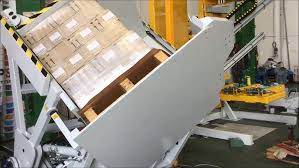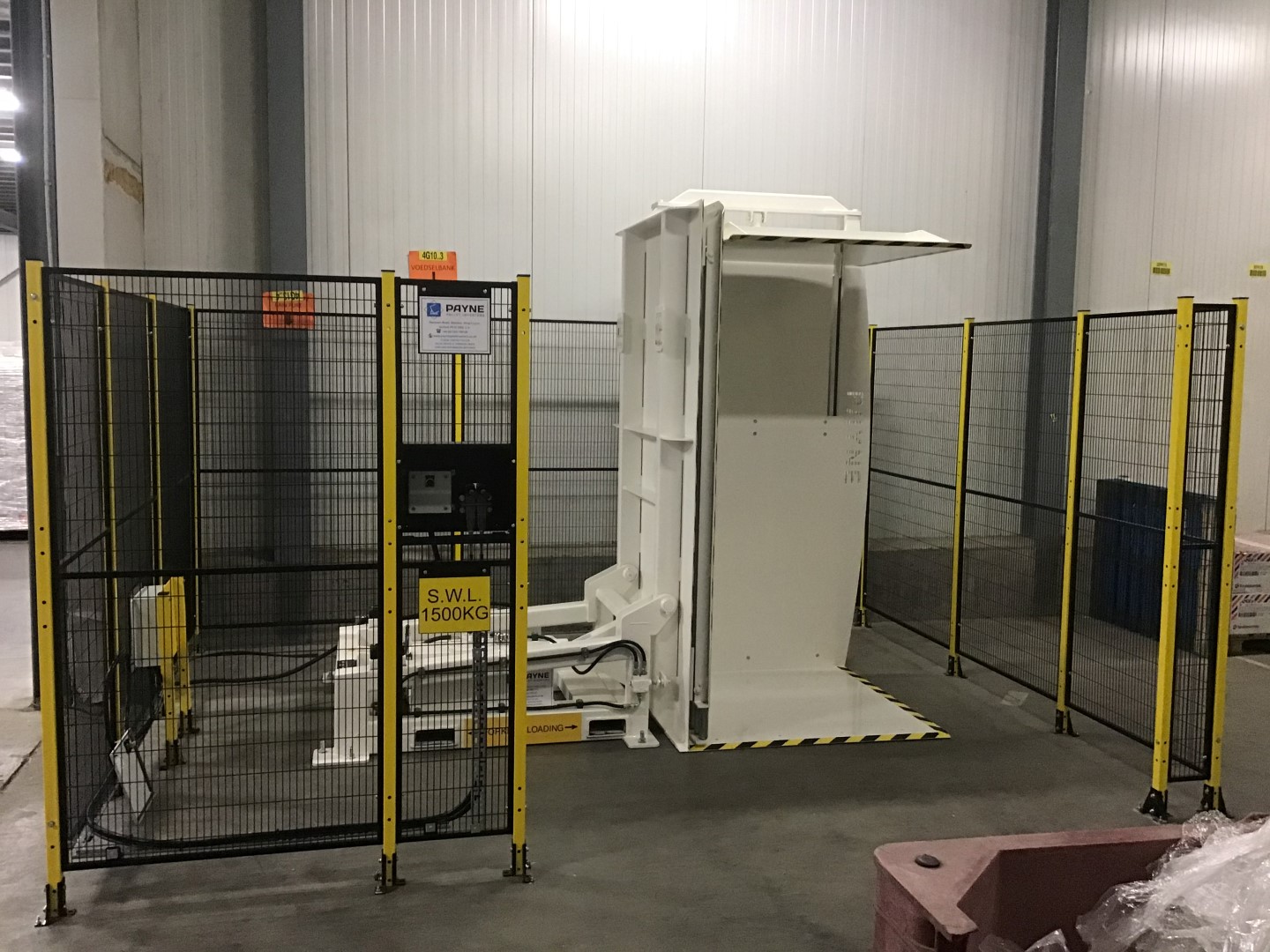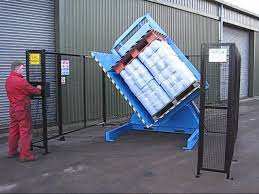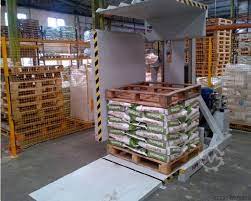Cutting Downtime in Russia: How Pallet Changing Machines Help
Unplanned downtime is a silent profit killer in any manufacturing plant. This is especially true in heavy industries like steel. A single halt on the production line can cascade into major delays. These delays cost thousands of dollars in lost output and idle labor. Imagine a perfectly good pallet of steel coils, ready for shipment. But the pallet itself is damaged or doesn't meet the customer's requirements. The old solution is manual transfer. This is slow, dangerous, and stops your entire shipping line. This problem happens more often than you might think. It is a common headache in demanding industrial environments, from the tough conditions in Russia to the high-volume steel mills in Mexico. What if you could swap that pallet in under a minute? And do it safely and automatically? That is the real power of a pallet changing machine.
Pallet changing machines help cut downtime in demanding industrial environments, like those in Russia, by automating the process of transferring goods from one pallet to another. This solution eliminates slow and risky manual handling. It prevents production bottlenecks caused by damaged or incorrect pallets. Most importantly, it ensures a continuous flow of materials, which directly boosts your operational efficiency and uptime.

I've spent my career in the packing machine industry. I've seen firsthand how a simple solution can have a huge impact on a company's bottom line. The principles of efficiency are universal. The challenges faced by a plant manager in Russia are often very similar to those faced by a CEO like Javier Morales in his steel mill in Mexico. Both need to keep production moving. They need to control costs and ensure safety. A pallet changer is a key piece of that puzzle. It might seem like a niche piece of equipment. But let's break down how this technology works. We can see why it is becoming essential for operations managers who are focused on maximizing efficiency and profit.
What Exactly is a Pallet Changer and Why is it Critical for Steel Mills?
You see a stack of finished steel wire. It's perfectly coiled and ready to go. But it sits on a standard wooden pallet. Your customer in Europe requires a specific plastic pallet for their automated warehouse system. What do you do? The old way involves manual labor. Your team has to unstack every heavy coil and then restack it on the new pallet. This process is incredibly slow. It introduces a high risk of damaging the product. And it is a major safety hazard for your team. Every minute your crew spends on this manual task is a minute your production line is not moving forward. A pallet changer, also known as a pallet inverter, is a machine designed to solve this exact problem. It securely grips the entire load, rotates or tilts it, and allows you to swap the pallet at the bottom without ever touching the product itself.
A pallet changer is a piece of mechanical equipment that transfers a full load of goods from one pallet to another. For steel mills, this equipment is critical. It handles heavy, and often unstable, loads like steel coils and wire bundles safely and efficiently. It automates a key logistical step at the end of your production line. This automation prevents product damage and ensures compliance with customer-specific or international shipping pallet requirements. By doing this, it prevents costly delays and rejections at the final, most critical stage of your process.

A Deeper Look at the Mechanics and Application
Let's dive a little deeper into how these machines function and why their design is so well-suited for the steel industry. At its core, a pallet changer uses a clamping mechanism. Two powerful plates press in from the sides to secure the load. This ensures that even irregularly shaped products, like coils of steel, are held firmly in place. Once the load is secure, the machine performs its main action. Some machines, called pallet inverters, rotate the entire load by 180 degrees. This places the original pallet on top, where it can be easily removed and replaced. Other systems use a "push-pull" method, where the load is pushed off one pallet and onto a new one.
For a steel mill owner like Javier, the benefits are immediate and clear.
- Handling Heavy Loads: Steel products are incredibly heavy. A single coil can weigh a ton or more. Manual handling is not just inefficient; it's practically impossible and extremely dangerous. A pallet changer is built to handle these capacities with ease, day in and day out.
- Maintaining Load Stability: A stack of steel coils or wires is not as stable as a box of consumer goods. They can shift and slide. The secure clamping system of a pallet changer prevents this movement, protecting both the product and your personnel.
- Preserving Product Integrity: The last thing you want is for a finished product to get damaged right before shipping. Manual restacking can cause scratches, dents, or deformation. A pallet changer handles the entire load as a single block, meaning the products themselves are never jostled or mishandled.
Let’s compare the two methods directly.
| Metric | Manual Pallet Transfer | Pallet Changer Machine |
|---|---|---|
| Time per Pallet | 20-30 minutes | 1-2 minutes |
| Labor Required | 2-4 workers | 1 operator |
| Safety Risk | High (strains, crush injuries) | Very Low (automated, guarded) |
| Product Damage Risk | Moderate to High | Very Low |
| Process Consistency | Low (depends on workers) | High (repeatable, standardized) |
For a facility with aging equipment, introducing a modern, automated solution like a pallet changer is a direct upgrade. It replaces an unreliable, high-risk manual process with a predictable, safe, and efficient automated one. This is a clear step towards the operational stability that every plant manager strives for.
How Does a Pallet Changer Directly Reduce Operational Downtime?
Picture this common scenario. A forklift driver spots a broken pallet just as a truck arrives for loading. The entire shipping bay grinds to a halt. You now have a delayed shipment. You have a truck driver waiting on the clock, and that time costs you money. You also have a bottleneck that is backing up into your warehouse and disrupting your entire logistics flow. That single broken piece of wood is costing you real money and creating chaos. A pallet changer, when placed strategically in your logistics flow, turns this crisis into a quick, two-minute task. It isolates the problem of the broken pallet and allows every other part of your operation to keep moving smoothly.
A pallet changer directly reduces operational downtime by eliminating the manual and time-consuming process of restacking goods. Instead of stopping a production or shipping line to deal with a damaged or incorrect pallet, the load is simply moved to the changer. The pallet is swapped in minutes, and the load is returned to the flow. This action prevents bottlenecks at critical points. It minimizes wait times for transport. It transforms what was once a major disruption into a minor, standardized, and predictable procedure.

Mapping the Flow: Where Downtime is Defeated
To truly understand the impact, think about the flow of materials through your plant. A pallet changer is not just a standalone machine; it's a problem-solving node in your logistics network. I have seen clients implement these machines in several key areas to eliminate specific sources of downtime.
1. At the Receiving Dock
Your suppliers might send materials on pallets that are not compatible with your internal systems. For example, you may use a high-quality captive pallet system in your automated warehouse, but receive goods on low-quality, single-use pallets. Without a changer, you would have to manually transfer these goods, causing a bottleneck right at the start of your process. With a pallet changer at receiving, you can immediately transfer incoming goods to your standardized internal pallets. This ensures they move smoothly through your factory without causing jams or errors in your automated systems.
2. Before the Shipping Bay
This is the most common and powerful application. Let's use the example of exporting steel from Russia. You might produce and store your steel coils on low-cost internal pallets. However, for export to Europe or North America, you need to use expensive, heat-treated wooden pallets or plastic pallets to meet international standards. A pallet changer allows you to make this switch at the very last moment. This practice significantly cuts down on your inventory costs for expensive pallets. More importantly, it ensures you never have to halt a shipment because you are on the wrong type of pallet. The truck arrives, you swap the pallet, and the load is on its way.
3. Near the Production Line
Sometimes a pallet gets damaged during the production process itself. A forklift might clip it, or a heavy load might cause a crack. In the past, this might have meant shutting down a section of the line for a messy and dangerous cleanup and restacking job. By placing a pallet changer nearby, the damaged unit can be quickly moved, fixed, and returned to the line. This minimizes the interruption to your production schedule.
For a leader like Javier, who has a goal to increase equipment uptime to 95%, every minute saved is a step in the right direction. Let's look at how a pallet changer mitigates common downtime sources.
| Downtime Source | Impact without Pallet Changer | Solution with Pallet Changer |
|---|---|---|
| Damaged Pallet Detected | Line Stoppage, Manual Restack (30 min) | Quick Swap (2 min), Line Continues |
| Incorrect Pallet Type | Shipment Delay, Truck Wait Fees | Swap to Correct Pallet, Ship on Time |
| QC Hold for Pallet Issue | Production Bottleneck, Warehouse Congestion | Isolate and Fix, No Wider Disruption |
By transforming these unpredictable delays into swift, predictable tasks, the pallet changer directly contributes to a more stable and productive operation. It smooths out the bumps in your logistics chain, which is essential for hitting ambitious uptime targets.
Can Pallet Changers Improve Safety and Meet Stricter Regulations?
Every factory owner's worst nightmare is a workplace accident. The manual handling of heavy loads, like the steel coils produced in Javier's mill, is one of the highest-risk activities in any plant. I have seen the consequences of these risks. A single slip or a moment of misjudgment can lead to serious, life-altering injuries. It can also lead to significant regulatory fines and a devastating blow to team morale. The pressure from safety regulators is always increasing, and the old excuse of "we have always done it this way" is no longer a valid defense in an investigation. Pallet changers are designed with safety as their top priority. They remove the human element from the dangerous task of load transfer. They enclose the entire process within a guarded, automated system, protecting your most valuable asset: your people.
Yes, pallet changers significantly improve safety. They do this by automating the hazardous task of manually transferring heavy or unstable loads. This automation dramatically reduces the risk of musculoskeletal injuries, strains, and crushing accidents. They also help you meet stricter regulations. They ensure loads are stable and placed on compliant pallets, such as the ISPM 15 standard required for international wood packaging. Modern machines come with integrated safety features like light curtains, safety fencing, and dual-channel emergency stops, which satisfy the most stringent occupational health and safety standards around the world.

Building a Culture of Safety and Compliance
Investing in safety is not just about avoiding negatives like fines and accidents. It's about building a positive, productive culture. When employees see that management is investing in technology to make their jobs safer, it boosts morale and shows respect for their well-being. A pallet changer is a very visible symbol of this commitment.
Let's break down the safety and regulatory benefits.
Enhancing Workplace Safety
- Ergonomics: The primary safety benefit is the elimination of manual lifting. This directly prevents the most common industrial injuries: back strains, shoulder injuries, and hernias.
- Accident Prevention: The secure clamping mechanism of a pallet changer prevents products from falling during transfer. This is a critical risk when dealing with heavy, round objects like steel coils.
- Integrated Safety Systems: Modern pallet changers are not just strong; they are smart. They come equipped with a suite of safety features.
- Safety Fencing: This creates a physical barrier that prevents personnel from entering the machine's operational area while it is in motion.
- Light Curtains: These create an invisible infrared barrier. If a person or object breaks the beam, the machine immediately stops, preventing entrapment.
- Dual-Circuit Controls: The machine requires the operator to use both hands to start a cycle, ensuring their hands are clear of any moving parts.
Meeting Strict Regulations
- ISPM 15 Compliance: This is a major issue for any company that exports goods. The International Standards For Phytosanitary Measures No. 15 (ISPM 15) is an international regulation to prevent the spread of pests and diseases through wood packaging materials. It requires that all wood pallets be debarked and heat-treated or fumigated. For an operation shipping from Russia or Mexico to global markets, compliance is mandatory. A pallet changer makes it simple to transfer goods from internal, non-treated pallets to fully compliant export pallets right before shipment. This avoids costly rejections or fumigation fees at the port of entry.
- Internal Quality Control: A pallet changer ensures that every load leaves your facility on a pallet that meets your quality standards. This reduces customer complaints about receiving goods on broken or substandard pallets.
For a leader facing increasing environmental and safety pressure, a pallet changer offers a concrete solution.
| Hazard/Regulation | Risk without Pallet Changer | Pallet Changer Solution |
|---|---|---|
| Manual Heavy Lifting | High risk of back and strain injuries. | Task is fully automated, eliminating ergonomic risk. |
| Unstable Load Transfer | Potential for product falls, crush injuries. | Load is securely clamped throughout the process. |
| ISPM 15 Export Rules | Shipments can be rejected, fined, or delayed. | Easy, last-minute swap to compliant pallets. |
This investment demonstrates a proactive approach to safety and compliance, which is the mark of a forward-thinking and responsible operation.
What is the Real ROI of Investing in a Pallet Changing System?
As a business owner, I know that every major purchase must be justified on the balance sheet. A new piece of equipment might look impressive on the factory floor, but the real question is always: when will it pay for itself? It is easy to get focused on the initial price tag of a machine. But doing so often means overlooking the hidden, ongoing costs of not investing. These are the costs of lost time, damaged products, potential workplace injuries, and unhappy customers. These costs add up every single day, quietly eating away at your profit margin. The real Return on Investment (ROI) of a pallet changer comes from a clear and simple calculation of savings in labor, gains in efficiency, and a significant reduction in operational risk. It is a strategic investment that pays dividends, not just an expense.
The real ROI of investing in a pallet changing system is calculated by adding the tangible savings from reduced labor costs, eliminated product damage, and lower pallet inventory costs to the significant benefits of increased throughput, improved safety, and enhanced customer satisfaction. For many steel and manufacturing operations I have worked with, the payback period for this investment can be as short as 12 to 24 months. This rapid return is driven by the huge reduction in operational downtime and all the associated costs that come with it.

Calculating the Payback
For a practical leader like Javier, who performs a strict feasibility analysis on every investment, the numbers have to make sense. Let's build a simple framework for calculating the ROI. The goal is to compare the "before" and "after" scenarios.
The ROI formula is simple: ROI = (Net Profit from Investment / Cost of Investment) x 100%. To find the payback period, we calculate: Payback Period = Cost of Investment / Annual Savings.
Let's break down the components of the "Savings" part of the equation.
1. Tangible Savings (Easy to Measure)
- Labor Savings: This is the most direct saving. Compare the time and number of workers needed for a manual transfer versus a machine.
- Example: Manual swap = 2 workers x 0.5 hours x $20/hour = $20 per pallet. Machine swap = 1 operator x 3 minutes (0.05 hours) x $22/hour = $1.10 per pallet. If you swap 10 pallets a day, that's a saving of nearly $190 per day, or over $45,000 per year.
- Reduced Product Damage: Estimate the value of goods damaged during manual handling each year. Even a conservative 1% reduction can lead to significant savings. If you ship $5 million worth of product handled this way, a 1% saving is $50,000.
- Pallet Inventory Cost Reduction: If you can use cheap ($8) internal pallets for 99% of the time and only swap to expensive, heat-treated ($25) pallets for the 20% of your product that is exported, the savings on pallet inventory can be huge.
2. Intangible Savings (Harder to Measure, but Very Real)
- Increased Throughput: How much more product can you ship per day because your logistics are not bottlenecked? This translates directly to revenue.
- Reduced Downtime: As we've discussed, every minute of uptime gained is profit earned.
- Lower Injury Risk: What is the cost of one serious workplace injury? Factoring in insurance costs, lost productivity, and potential fines, avoiding just one incident can pay for the machine several times over.
- Customer Satisfaction: Delivering on time, on the right pallet, with no damage builds a reputation for reliability. This leads to repeat business and a stronger market position.
Here is a simplified payback calculation table:
| Savings Category | Estimated Annual Savings |
|---|---|
| Labor Savings | $45,000 |
| Product Damage Reduction | $50,000 |
| Pallet Inventory Savings | $15,000 |
| Total Annual Savings | $110,000 |
| Cost of Investment | $150,000 (Example Machine + Install) |
| Payback Period | 1.36 Years ($150k / $110k) |
This kind of analysis shows that a pallet changer is not a cost center. It is a profit center. It directly addresses the goal of lowering overall operating costs and improving the bottom line.
My Take: Why a Pallet Changer is More Than Just a Machine, It's a Strategy?
Throughout my career, I've seen many factory managers look at equipment like a pallet changer and see it as a solution to a single, annoying problem: what to do with broken or incorrect pallets. They see it as a useful tool, and they are not wrong. But this view is too narrow. If you only see the tool, you miss the much bigger strategic advantage it provides. When you only focus on fixing a symptom, you miss the opportunity to improve the health of the entire system. From my own journey building a packing machine factory to helping my clients grow their businesses, I have seen that the most successful leaders think differently. They see a pallet changer not just as a machine, but as a strategic enabler for flexibility, growth, and operational resilience.
From my experience as both an engineer and a factory owner, a pallet changer is more than just a piece of equipment; it is a strategic asset. Its true power lies in its ability to decouple your internal production logistics from your external shipping and customer requirements. This decoupling creates incredible flexibility. It allows you to adapt instantly to any customer's pallet specification, anywhere in the world, without ever disrupting your own optimized internal processes. This makes your entire operation more agile, more efficient, and more resilient to the challenges of a global market.
The Decoupling Strategy
Think of your factory as its own ecosystem. Inside this ecosystem, you want everything to be as efficient and low-cost as possible. This might mean using a standardized, reusable, and durable set of internal plastic or metal pallets. These pallets are perfect for your automated conveyors, your warehouse racking, and your production environment. They are a captive asset that you control completely.
The outside world, however, is messy and unpredictable. One customer in the U.S. wants a 48x40-inch GMA pallet. Another customer in Germany needs a 1200x800mm Euro-pallet. A shipment going through Russia might have specific local requirements. Without a decoupling point, you are forced to let this external chaos dictate your internal processes. You either have to use expensive export pallets for everything, or you have to deal with constant, inefficient manual swapping.
The pallet changer acts as the perfect gateway between your controlled internal world and the chaotic external world. It is your universal translator for pallets.
This strategy unlocks several key advantages:
- Ultimate Flexibility: You can say "yes" to any customer, no matter how unusual their pallet request is. This opens up new markets and makes you an easier partner to do business with. Your sales team will love this.
- Enhanced Resilience: What happens if there is a supply chain disruption for the specific heat-treated wood pallets you need for export? For other companies, this might shut down their international shipping. For you, it's a minor issue. You can continue producing on your internal pallets and simply wait for the supply of export pallets to resume, then swap them at the last minute.
- True Scalability: As your business grows and you begin exporting to new regions, this capability becomes even more critical. A pallet changer is a one-time investment that allows you to scale your global operations infinitely without having to re-engineer your internal logistics each time.
- A Node for Digitalization: For a forward-thinking leader like Javier, who aims to deploy MES and IoT platforms, the pallet changer becomes a valuable data collection point. You can track every pallet swap. You can log which customer required it, what type of pallet was used, and the time it took. This data feeds directly into your manufacturing execution system, giving you a clearer picture of your true operational costs and logistics flow.
When I started my journey, I learned that the best investments were the ones that solved a problem while also creating new opportunities. A pallet changer does exactly that. It solves the immediate problem of downtime and safety, but its real value lies in the strategic freedom and efficiency it gives your entire operation. It's a key piece in building a factory that is not just productive, but truly robust and ready for the future.
Conclusion
Investing in a pallet changer reduces downtime, boosts safety, and delivers a clear ROI. More importantly, it provides the strategic flexibility to make your entire operation more resilient and competitive.


